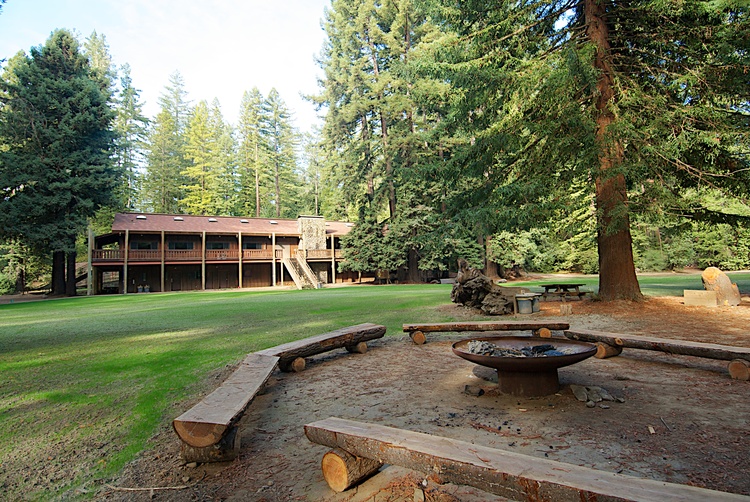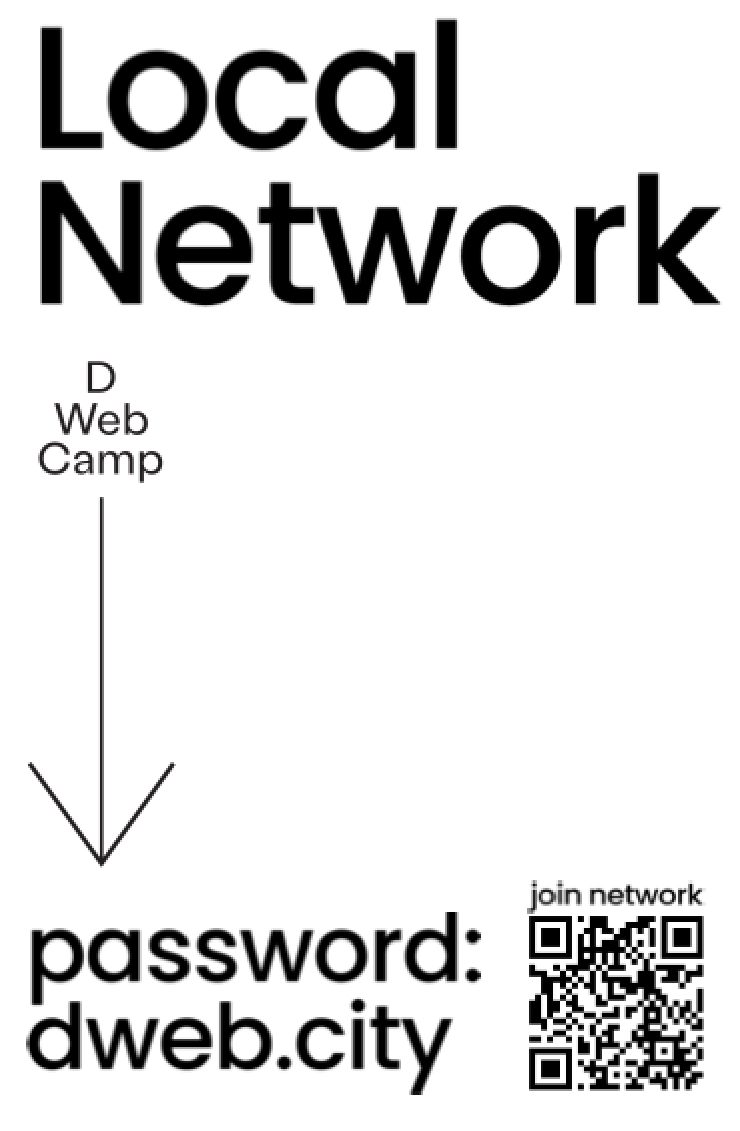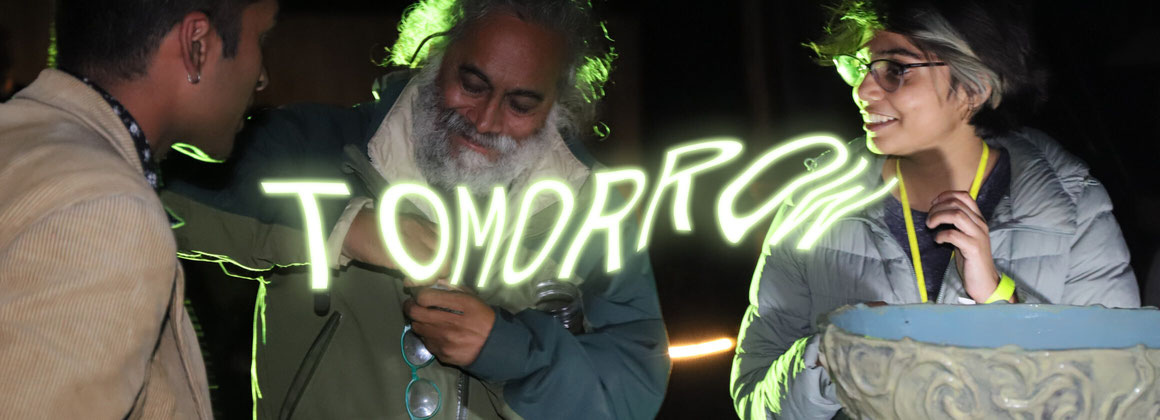Superbloom recently attended DWeb Camp 2023, an “unconference” focused on building a more resilient, private, and accessible decentralized web. We stewarded the event’s first ever Design Track; Ngọc Triệu led organization of the Design Track with support from Philliph Drummond. It was a real treat to camp among California redwoods and explore the intersections of human-centered design and decentralized technologies. Indeed, our curiosity and passion for both motivated us in what proved to be an immense organizational effort both before and during the event.
Over the course of the four days, the Design Track served as a hub for all things related to human-centered design. The track itself became a space where designers, developers, researchers, end-users and policymakers came together to understand how we as a community could create a more humane decentralized web—i.e. one that concerns itself with being as decentralized, distributed, and resilient as it is usable, inclusive, and sustainable.
Before camp: planning and organizing

To create the clearing that then became the Design Track at Camp Navarro, we co-organized an inclusive space that was open to a variety of thematic topics within the domain of user experience design. We wanted to broaden our focus, moving away from curated design and usability-related sessions. When we first met our collaborators, it was clear we all had a desire to deepen the camp experience for DWeb Fellows via the track’s content. We held planning meetings with other DWeb community co-organizers, which resulted in launching a dedicated webpage on the DWeb site, and a Designer Facilitator Discord to help inform and organize the design track facilitators and design practitioners attending camp. We settled on a total of 14 sessions: co-design workshops, clinics, meetups along with open discussions on topics like privacy and security, aesthetics, user onboarding and advocacy, and envisioning alternative futures.d
During camp: stewardship and networking
At camp we oversaw the Design Track from Cozy Hollow, a delightful nook tucked away just below Hacker’s Hall. From here, we focused on supporting facilitators with their sessions and helped attendees to make meaningful connections with one another. A big part of that work was helping with user testing and feedback for DWeb Camp’s Emergence App, creating a zine for the Local Network team, and leading two sessions: “Human-Centered Design for Responsible AI & Tech” and “Design & Usability Clinic.” These two hands-on sessions served as a “mushroom patch” from where we spread design knowledge, resources, and tools across the many conversations at camp. We did this by promoting meaningful conversations about the risk, usability, and design with community leaders, founders, creators, funders, and end-users during each of the sessions.

In bringing together the design community at DWeb Camp, as co-organizers we wanted to learn more about the real human challenges facing DWeb projects. We spoke with teams behind apps such as Manyverse, Mapeo, and CENO Browser to understand each of teams’ goals and pain points. These conversations revealed that while encryption and resilience (security) are priorities, usability and accessibility continues to remain an afterthought. We learned that the dev teams lacked the resources, or struggled to develop deep insight into how people actually use, or intend to use, their products. We found that many decentralized web applications tend to be challenging and cumbersome to use, creating obstacles to broader adoption. We heard that the marginalized groups that could most benefit from these tools are often not included in the design process. A common feeling is that the needs of end-users are not prioritized on a systemic level.
After the camp: reflections and learning

After the event, we spent some time reflecting on our experiences to understand what we had learned. We reviewed some of the consistent questions and topics collected from Design Track sessions including: how to onboard designers, the challenge to secure funding and resources for user research or design work, and the nuances of onboarding new users to different styles or modes of social networking. The internet shutdown experiment called “Tomorrow” is a great example of both the latter and the other issues related to the Design Track.
On the Saturday and Sunday of DWeb Camp, the camp’s entire local area network – and, unexpectedly, the camp’s electrical power - was shutdown meaning attendees were unable to connect to the internet. This experience was simultaneously enlightening and fruitful. It rooted in us the importance of focusing on not only the technology needed during an internet shutdown, but also on the broader societal conditions that enable or create friction in the use of peer-to-peer (P2P) technologies. I.e. it revealed that some could not “see the forest for the trees”. This provided a concrete, tangible understanding of the importance of advocating for those who experience heavy censorship or internet shutdowns, as well as those who have no access, or degrees of limited access, to the web or electrical infrastructure.
Reflecting on the “Tomorrow” experiment made us respect it for the experiment that it was and led us to ponder what might need to change to make the DWeb Camp more human-centered. Here are a few ideas:
Rally around real people
We must advocate for end users: the humans experiencing the decentralized platforms and tools being created, especially those facing censorship and shutdowns. Understanding how they live and their needs is critical to building technology interventions that resonate with and fit into people’s lives. To do this well, software teams require a collaborative relationship with consistent input from end users to improve tools and better serve users’ needs.
Design and designers are critical infrastructure
Funders and builders in the DWeb ecosystem must prioritize people’s needs from the start, not as an afterthought. And adding experienced designers to their teams who grasp the human side of decentralized tech can accelerate efforts. Our experiences and observations at DWeb Camp further validated the importance of integrating usability and accessibility into the infrastructure of the decentralized web.
Design intuitive onboarding
There’s a huge knowledge gap between centralized tech and new, decentralized protocols for most end users. Again, intuitive onboarding is a critical touchpoint to help bridge this divide, especially for the average, non-technical user. And generally, this knowledge gap can be addressed by informing users about key differences which might affect their experience of a decentralized application.
Look beyond the technology
During the experiment, the focus of some focused was very narrow i.e. on testing apps whereas we felt they should have focused on the human experience enabled by those tools, and the broader context of the overall experience instead, e.g. preparation, communication, and community infrastructure. However, this narrow focus did highlight that compounding technical issues can create some wicked challenges. Challenges that should be considered as part of developing design intervention e.g. developing low-power mode for applications for use in shutdown scenarios, or having multiple methods applications may use to communicate so that they are not dependent on mechanisms that might have additional dependencies, e.g. power and cell phone towers, or WiFi and power to routers.
Open up the design process
DWeb values collaboration, so we should extend that to valuing open design as well through practices such as participatory workshops, and sharing research learnings. An open collaborative process is desirable for many reasons. It creates a sense of shared ownership, fosters empathy and understanding among team members, encourages transparency and accountability, and can lead to better design outcomes that reflect diverse perspectives and needs. By opening up the design process, one can create a more collaborative and inclusive environment that empowers designers, developers, and end-users alike to together build a more humane decentralized web.
Build more humane tech together
Established designers should mentor new voices to grow the ranks of human-centered DWeb designers. DWeb Camp provides a perfect knowledge sharing forum for this.
Looking ahead: follow-ups and future engagements
We had many aspirations for DWeb Camp 2023 which certainly brought its own challenges. From logistical hiccups to managing different tasks simultaneously, the journey found us in some arduous and rocky outcrops, but it was ultimately very rewarding. The distributed physical and social structures of the Camp made group convening difficult, and last-minute changes posed additional problems we had to adapt to. However, the positive feedback we received underlined the significance and impact of having a designated Design Track, and why such a space was necessary.
The end of DWeb Camp 2023 marked the beginning of numerous follow-ups and potential collaborations. Through these collaborations, we aim to further the conversation around design and usability, fostering a more inclusive and user-friendly decentralized web space.
DWeb Camp 2023 offered a unique platform for designers, technologists, and other stakeholders to engage, collaborate, and discuss how to make the decentralized web more user-friendly, inclusive, and environmentally conscious. As we move forward, the lessons learned and the connections made at the camp will play a significant role in driving the design and usability agenda in the DWeb space. Our next steps are to continue spreading the word and taking an intersectional approach that distributes power equitably. After diving deep into the decentralized future, we’re hopeful we can build a more humane web, for everyone.
Credits
- With support from the Open Technology Fund.
- Design Track: https://dwebcamp.org/designers/
- About DWeb Camp: https://www.youtube.com/watch?v=zx7Dduv0Hd4